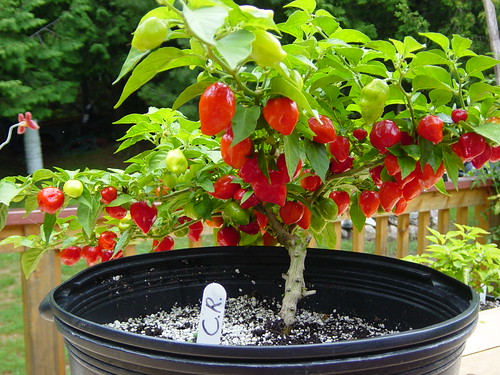Cross counrty nurseries seems to call all C. chinenses habaneros or hab typesI think part of the taxonomy problem is that "Habanero" is more a description of the pod shape than it is of the geographic area where it originated. Take a look at how Cross Country Nursery classifies peppers by pod type as an example of this...
7 pods, bhuts, fatalii, devil's tongue, nagas, scorpions etc.are not habaneros
All habaneros are C. chinenses
Not all C. chinense are habaneros

